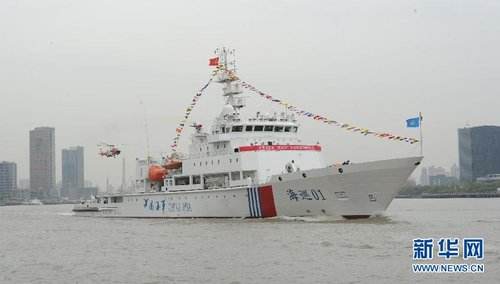(Xinhua)09:47, June 02, 2019![]()
BEIJING, June 1 (Xinhua) — Cooperation between China and the United States on technological innovation and high-tech can be highly complementary and mutually-beneficial, and both sides can enhance competitiveness in the long run, according to Chinese trade experts at a seminar.
It is a false view that China is the only party benefiting from the bilateral technological and high-tech cooperation, said Zhang Xiaoqiang, executive deputy head of the China Center for International Economic Exchanges (CCIEE).
Organized by the CCIEE on Friday, the seminar was attended by former officials and representatives from business sectors.
For example, U.S. semiconductor giant Qualcomm and Micron have seen over half of their sales revenue coming from Chinese market while the figure for Texas Instruments and Intel is one-third, said Zhang, also the former deputy director of the National Development and Reform Commission.
Meanwhile, Apple and Hewlett Packards largest assembly and manufacturing bases are also located in China where they have sold a large number of their products, Zhang said. These companies have all benefited from the dividends of Chinas development.
Commenting on recent U.S. moves to escalate trade disputes, Zeng Peiyan, chairman of the CCIEE said a cold-war mentality, unilateralism and a zero-sum games were outdated things and not conducive to solving problems.
The U.S. trade bullying will seriously damage global scientific and technological exchanges and industrial development, said Wang Chunzheng, former head of the Office of the Central Leading Group on Financial and Economic Affairs.
The spillover effects accumulated over the years in the process of international technological cooperation, which have been proved effective, will be lowered, resulting in immeasurable losses to China and the United States as well as people across the globe, he said.
Ma Xiuhong, former vice commerce minister said that the U.S.-invoked trade disputes and escalating behaviours had apparently curbed the sound momentum of Sino-U.S. two-way investments, causing adverse impact on enterprises of both countries.
However, China is capable of strengthening basic research, striving for breakthroughs in core technology and enhancing competitiveness of its high-tech industry, Zhang said.
Chinese economy has great resilience, huge potential and room for manoeuvres in coping with external challenges, and the U.S. suppression would be in vain, Zeng said, calling on the U.S. side to return to rationality on its policy toward China and show sincerity to solve the problems.



